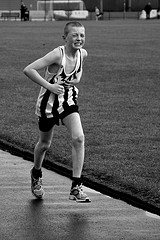 Pain Relief for Children
Pain Relief for Children
We often see children in pain from various causes. This page provides the correct doses of medication for children in pain.
Firstly, please note that, except in the case of suspected trauma to the upper airways, it is ALWAYS a good idea to give appropriate medication to a child in pain. This never affects our ability to diagnose a problem and often helps.
Before giving any medication to a child, be sure you know whether or not they have any allergies or are taking any other medications. If you have any doubts, healthline on 0800 611 116 will provide free advice.
Small children can become ill very quickly. If your child deteriorates or does not improve quickly you should see a doctor regardless of the time of night.
Paracetamol
Paracetamol (panadol, paracare etc.) is a very safe and effective painkiller. Allergy and side effects are very rare. This medication can be purchased in syrup form from pharmacies and in tablet form (for adults and older children) from supermarkets and pharmacies.
Paracetamol syrup is available in 2 strengths. Strawberry flavour is 120mg/5ml and usually used for very young children. Orange flavour is 250mg/5ml and is suitable for children over about 6 months. Before this age, correct dosing is difficult with the higher strength preparation
The correct dose regardless of strength is 15mg per Kg of body weight (maximum 1g). This dose can be given every four hours but you should not give more than four doses in a day.
If you do not know your child's weight, you can use the approximate dose for age chart below. The doses are safe for a very wide range of sizes in each age group. If you are unsure which is the best dose, give the nearest one to your child's age once and contact the surgery the next day.
| Age | Dose 120mg/5ml | Dose 250mg/5ml |
| 3 months | 2.5ml | |
| 6 months | 5ml | 2.5ml |
| 1 year | 6.5ml | 3ml |
| 18 months | 7ml | 3.5ml |
| 2 year | 7.5ml | 3ml |
| 3 years | 9ml | 4.5ml |
| 5 years | 10ml | 5ml |
| 7 years | 14ml | 7ml |
| 10 years | 20ml | 10ml |
Ibuprofen
Ibuprofen (fenpaed, nurofen) is best kept for when paracetamol alone is not strong enough as it can cause damage to the lining of the stomach. It can also be harmful in children who are dehydrated and a very small proportion of young asthmatics can have wheezing triggered by the drug.
That having been said, it is overall a very safe medication which you should consider having available for emergencies as it is a potent pain killer and can be given at the same time of day as a dose of paracetamol.
We advise that you first give an appropriate dose of paracetamol and then consider ibuprofen if symptoms persist about an hour later. For acute earache, it may be appropriate to give both at once as the pain can be severe.
The correct dose is from 5 to 10mg/Kg given 3 times daily, preferably after food. Syrup forms are always 100mg/5ml.
If you do not know your child's weight, you can use the approximate dose for age chart below. The doses are safe for a very wide range of sizes in each age group. If you are unsure which is the best dose, give the nearest one to your child's age once and contact the surgery the next day.
| Age | Dose |
| Under 6 months | Best Avoided - please see a doctor |
| 6 months | 2.5ml |
| 12 months | 4ml |
| 18 months | 5ml |
| 2 years | 6ml |
| 3 years | 7.5ml |
| 5 years | 10ml |
| 7 years | 15ml |
| 10 years | 20ml |
Children's Dose Calculator
This script uses 15mg/kg for paracetamol and 10mg/kg for ibuprofen.
For weights of 50Kg or above, adult doses are specified.
NOTE: You must enter a weight in Kilograms. This does not work in pounds.
Weight: Kg
PARACETAMOL:
120mg/5ml (pink/strawberry):
250mg/5ml (orange):
IBUPROFEN:
100mg/5ml:
Aspirin - avoid
Many of us grew up with aspirin as the mainstay of our family medical chests. Sadly, on rare occasions, aspirin has been shown to cause a potentially fatal condition called Reye's Syndrome when given to children.
Aspirin SHOULD NOT BE GIVEN to children inder the age of 18.
Bonjela and a few other oral mouth ulcer treatments may also contain salicylates (which are similar to aspirin) and should not be given to children. There are varieties that are safe for children - If in doubt, ask us or check with your pharmacist.
Codeine
For children over 10 years, who are able to swallow (or chew) tablets, codeine may be considered for severe pain such as bad toothache or earache. ONE panadeine or codalgin tablet may be taken whole, chewed, or crushed in jam. Pain severe enough to require a second dose is definitely severe enough to get help for in the morning.
It is very important NOT to give panadeine or codalgin at the same time as (or within four hours of) any other medication containing paracetamol.
Codeine is an addictive drug. Although occasional use does not lead to addiction, some people prefer not to use codeine in children for this reason. Other side effects include constipation (common) drowsiness (fairly common) over activity (uncommon), nausea and vomiting (rare).